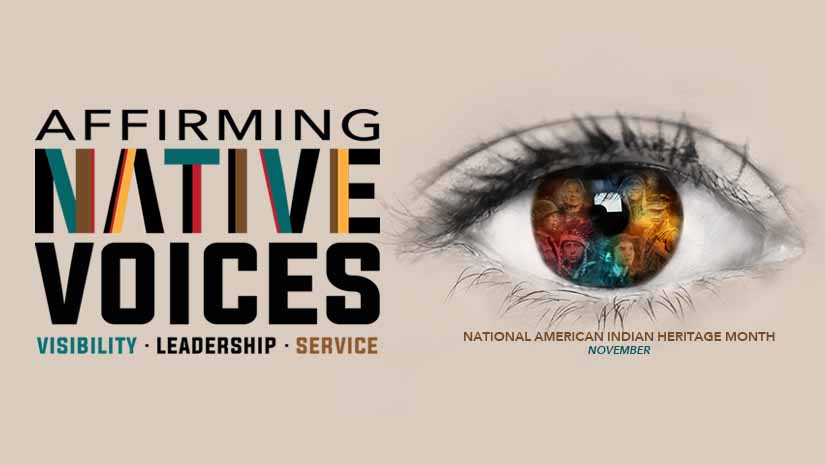2024 National Native American Heritage Month
Posted on Nov 1, 2024 in MainEvery November, the Department of Defense (DoD) joins the Nation in celebrating National American Indian Heritage Month, also known as Native American and Alaska Native Heritage Month. It’s an opportunity to recognize the rich and diverse cultures, traditions, and important contributions of Native American and Alaskan Native peoples.
The 2024 theme for National American Indian Heritage Month is “Affirming Native Voices: Visibility, Leadership, Service.” This reflects the essential perspective of American Indians and Alaska Natives, their outstanding commitment to service, and the need to elevate their voices.
As of 2020, over 9 million people identified as American Indian and Alaska Native, making up around 2.9% of the U.S. population. This number nearly doubled from the 2010 Census.
There are over 574 federally recognized tribes with unique cultures and individuals. Their diverse cultures reflect many ways of life. Some of the largest groups of Native Americans include members of the Navajo Nation, Cherokees, and Choctaws.
Historical Figures
Nellie Locust

Born in Vinita, Oklahoma, Nellie Locust was a member of the Cherokee Nation and the U.S. Coast Guard (USCG) Women’s Reserve, or SPARS, which stands for the USCG Motto: Semper Paratus, Always Ready, during World War II.
Locust grew up speaking Cherokee with her six siblings. She attended Indian Boarding Schools and balanced her Native American heritage while learning English and, eventually, secretarial skills.
When World War II erupted, Locust joined SPARS as part of the Sooner Squadron, a team of women from Oklahoma. She traveled to Florida in 1943 for training, worked at a vessel repair base, and served in the Coast Guard Identification Office.
Locust’s service was often covered in the news, often with outdated language and stereotypes, but she would quickly push back. She brought attention to the Trail of Tears and emphasized her average American girlhood and culture.
Locust often celebrated her Cherokee traditions, such as corn festivals and the sacred fire ceremony. The Sooner Squadron, which had five other American Indian women among its ranks, embodied pride and service for the United States and Native heritage.
Shortly after WWII, Locust passed away at just 26 years old from illness. Her SPARS service is memorialized on her gravestone.

Horace Poolaw

Born in 1906, Horace Poolaw was a prominent photographer and Service member whose work went underappreciated during his life.
From Mountain View, Oklahoma, Poolaw developed a love of photography as a teenager. He prolifically took photos of his tribe, the Kiowa, doing everyday activities, such as parades, fishing, or attending weddings. He portrayed the everyday culture of Americans Indians and their history before and after WWII.
Many of Poolaw’s photos also depict his interest in the military. He enlisted in the Army Air Force in 1943, trained as an aircraft mechanic, and learned aerial photography.
During World War II, he taught bomber crews how to document their bombing missions through photography. After his honorable discharge in 1945, he continued his work as an aircraft mechanic and took photos of Kiowa veterans’ homecomings, honor dances, and funerals.
Poolaw passed away in 1984 at age 77. It wasn’t until after his death that his photos gained significant notoriety, thanks to his daughter Linda.
In 2014, the Horace Poolaw exhibition opened at the National Museum of the American Indian in New York. Importantly, Poolaw’s work portrays the Kiowa warrior tradition, midcentury culture, and U.S. military service.



